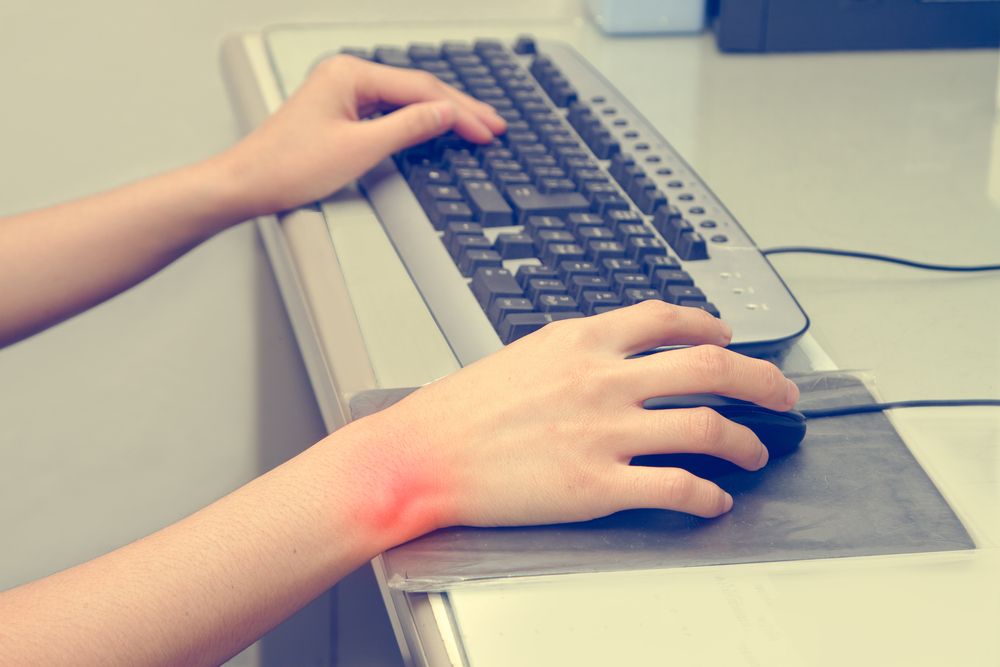
Dr. Keith Raskin treats carpal tunnel syndrome for NYC patients looking for relief from hand pain and numbness.
If you have ever felt tingling, pain, or numbness in your hand and wrist, you are not alone. Carpal tunnel syndrome is one of the most common hand conditions of the 21st century, with more than 8 million cases reported worldwide each year. This number is rising steadily. Experts suggest that this is due to stress on our wrists and hands from excessive smartphone and computer usage.
The symptoms of carpal tunnel syndrome can range from mild to extremely debilitating. However, surgical intervention can alleviate any discomfort and restore mobility and function to the hand once more. For over twenty years, Dr. Keith Raskin at The Raskin Center for Hand, Wrist & Elbow Surgery in Manhattan, NY has diagnosed and treated carpal tunnel syndrome patients.
What Is Carpal Tunnel Syndrome and What Causes It?
Carpal tunnel syndrome is a condition affecting the fingers, hands, and wrists. The median nerve transmits messages between the nervous system and the hands. Carpal Tunnel occurs when this nerve becomes compressed within the sheath that covers it – the carpal tunnel.
This compression interrupts the signals sent between the brain to this part of the body. As a result, the sufferer experiences the painful symptoms that characterize carpal tunnel syndrome.
It is not known exactly why some people develop carpal tunnel syndrome and some do not. However, certain groups of individuals are considered to be at greater risk. These include:
- People over the age of 40
- Women, as their build generally means that they naturally have smaller carpal tunnels. Because of this, the median nerve is more likely to become compressed.
- People who have previously suffered a trauma or injury to the hand or wrist
- Individuals who have a job or hobby that puts them at increased risk of developing repetitive strain injury (RSI). This includes people who spend a lot of time using laptops or handheld tools. People who often play sports like tennis or golf are also at risk.
- Sufferers of certain chronic health conditions, like diabetes or an underactive thyroid
Symptoms of Carpal Tunnel Syndrome
The symptoms of carpal tunnel syndrome can vary between patients and largely depend on the severity of the condition. However, most patients share the most common characteristics of carpal tunnel, which include:
- Mild, moderate, or intense pain in the fingers, hand, wrist, or forearm. In some rare cases, pain can occur as far up the arm as the shoulder. The discomfort may be isolated in one area or across various parts of the limb at the same time.
- Unusual sensations in the fingers, hand, or wrist. Commonly reported sensations include numbness, tingling, prickling, or feelings of heat or cold.
- Lack of strength in the affected limb. This could include weakness in your grip or in the movement or support provided by your wrist. It may also include an inability to grip effectively.
Treatment Options for Carpal Tunnel Syndrome
The treatment that Dr. Raskin recommends for this condition will depend primarily on the severity of your condition, and the degree to which it is impacting on your day to day life.
In some instances, carpal tunnel syndrome may improve on its own accord. However, in many cases, we might suggest that you try a variety of different therapies and tactics to improve the symptoms associated with your condition or surgery.
Adjustments and Modifications for Carpal Tunnel Syndrome
One of the simplest things that you can do to improve your condition, or even to help prevent carpal tunnel syndrome from occurring, is to look into what adjustments and modifications can be made to your work or recreational routines.
Adjustments can include using specialist tools such as wrist supports or desk extensions, or taking regular rest breaks from an activity that places strain on your wrist joints. Many patients also find that they can reduce the severity of carpal tunnel syndrome by ensuring that their hands stay warm, so a decent pair of gloves could prove to be a wise investment.
Non-Surgical Carpal Tunnel Treatments
There are a variety of non-surgical treatment options available to patients suffering from this issue. These include supports such as wrist splints, the use of non-steroidal anti-inflammatory and pain relief medications, and even corticosteroid injections. However, if these prove to be unsuccessful, or do not provide enough relief for the patient, surgical intervention may be necessary.
Carpal Tunnel Release Surgery
Carpal tunnel release surgery is normally performed as an outpatient service, meaning that you will be able to return home the same day as your procedure. In this surgery, the roof of the carpal tunnel is cut to reduce pressure on the median nerve.
Carpal tunnel release surgery can now be performed laparoscopically, meaning that we can release the nerve without the need for an extended incision into the patient’s arm. Patients who opt for this type of minimally invasive surgery often report that they heal much faster during recovery, have less scarring, and can return to their usual activities sooner.
In most cases, carpal tunnel release surgery can successfully provide a permanent cure for the condition, but this does not automatically make it the best choice for all patients.
Contact Us
If you would like to find out more about carpal tunnel syndrome in NYC and how it can be treated, call The Raskin Center for Hand, Wrist & Elbow Surgery today at 212-889-8600.







